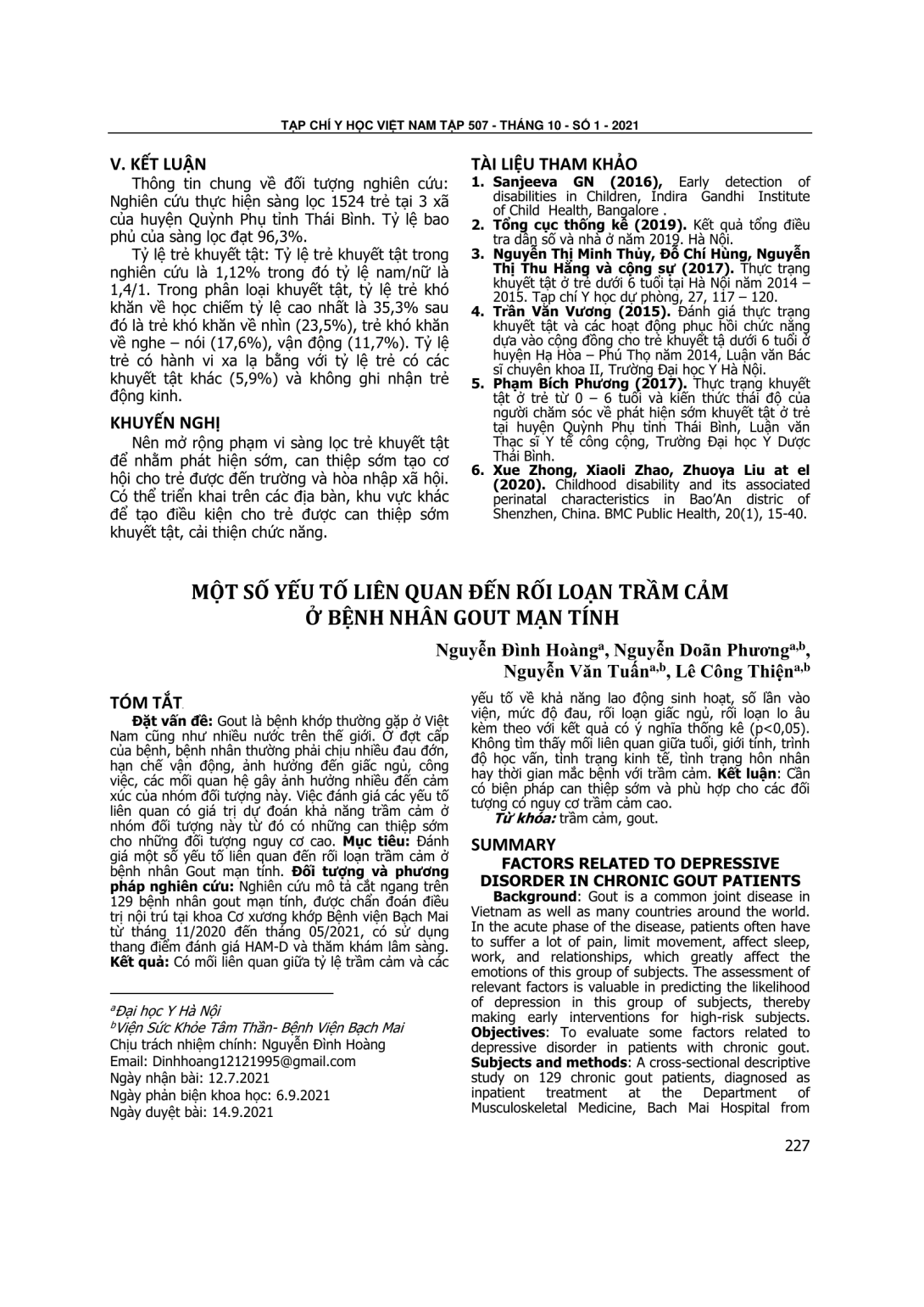
Gout là bệnh khớp thường gặp ở Việt Nam cũng như nhiều nước trên thế giới. Ở đợt cấp của bệnh, bệnh nhân thường phải chịu nhiều đau đớn, hạn chế vận động, ảnh hưởng đến giấc ngủ, công việc, các mối quan hệ gây ảnh hưởng nhiều đến cảm xúc của nhóm đối tượng này. Việc đánh giá các yếu tố liên quan có giá trị dự đoán khả năng trầm cảm ở nhóm đối tượng này từ đó có những can thiệp sớm cho những đối tượng nguy cơ cao. Mục tiêu: Đánh giá một số yếu tố liên quan đến rối loạn trầm cảm ở bệnh nhân Gout mạn tính. Đối tượng và phương pháp nghiên cứu: Nghiên cứu mô tả cắt ngang trên 129 bệnh nhân gout mạn tính, được chẩn đoán điều trị nội trú tại khoa Cơ xương khớp Bệnh viện Bạch Mai từ tháng 11/2020 đến tháng 05/2021, có sử dụng thang điểm đánh giá HAM-D và thăm khám lâm sàng. Kết quả: Có mối liên quan giữa tỷ lệ trầm cảm và các yếu tố về khả năng lao động sinh hoạt, số lần vào viện, mức độ đau, rối loạn giấc ngủ, rối loạn lo âu kèm theo với kết quả có ý nghĩa thống kê (p<0,05). Không tìm thấy mối liên quan giữa tuổi, giới tính, trình độ học vấn, tình trạng kinh tế, tình trạng hôn nhân hay thời gian mắc bệnh với trầm cảm. Kết luận: Cần có biện pháp can thiệp sớm và phù hợp cho các đối tượng có nguy cơ trầm cảm cao.
Gout is a common joint disease in Vietnam as well as many countries around the world. In the acute phase of the disease, patients often have to suffer a lot of pain, limit movement, affect sleep, work, and relationships, which greatly affect the emotions of this group of subjects. The assessment of relevant factors is valuable in predicting the likelihood of depression in this group of subjects, thereby making early interventions for high-risk subjects. Objectives: To evaluate some factors related to depressive disorder in patients with chronic gout. Subjects and methods: A cross-sectional descriptive study on 129 chronic gout patients, diagnosed as inpatient treatment at the Department of Musculoskeletal Medicine, Bach Mai Hospital f-rom November 2020 to May 2021, using HAM-D scale and clinical examination. Results: There was a relationship between the rate of depression and factors such as working ability, number of hospital admissions, pain level, sleep disturbance, anxiety disorder with significant results. statistics (p<0.05). No association was found between age, sex, education level, economic status, marital status or duration of illness with depression. Conclusion: Early and appropriate interventions are needed for subjects at high risk of depression.
- Đăng nhập để gửi ý kiến
